Business to business introduction letter template
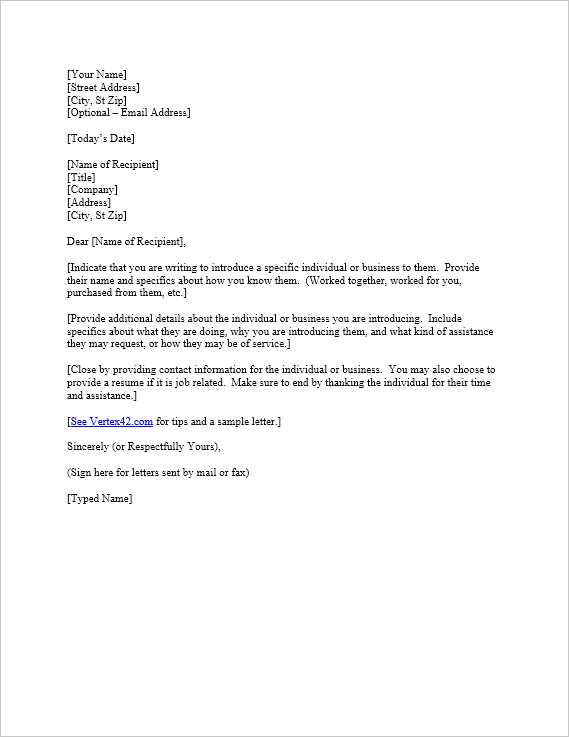
A well-structured business-to-business (B2B) introduction letter is key to building strong, lasting partnerships. Focus on clarity and conciseness, offering relevant details without overwhelming the reader. Start by clearly stating the purpose of your communication and the mutual benefits your business can offer.
Make it personal and direct. Address the recipient by name and highlight your specific interest in their company. Show you’ve done your research and explain how your product or service aligns with their needs.
Follow with clear next steps. Indicate how you can move forward, whether it’s scheduling a meeting or providing more details. Make sure to include contact information and express your enthusiasm for the potential partnership.
Crafting the Opening Line: Making a Strong First Impression
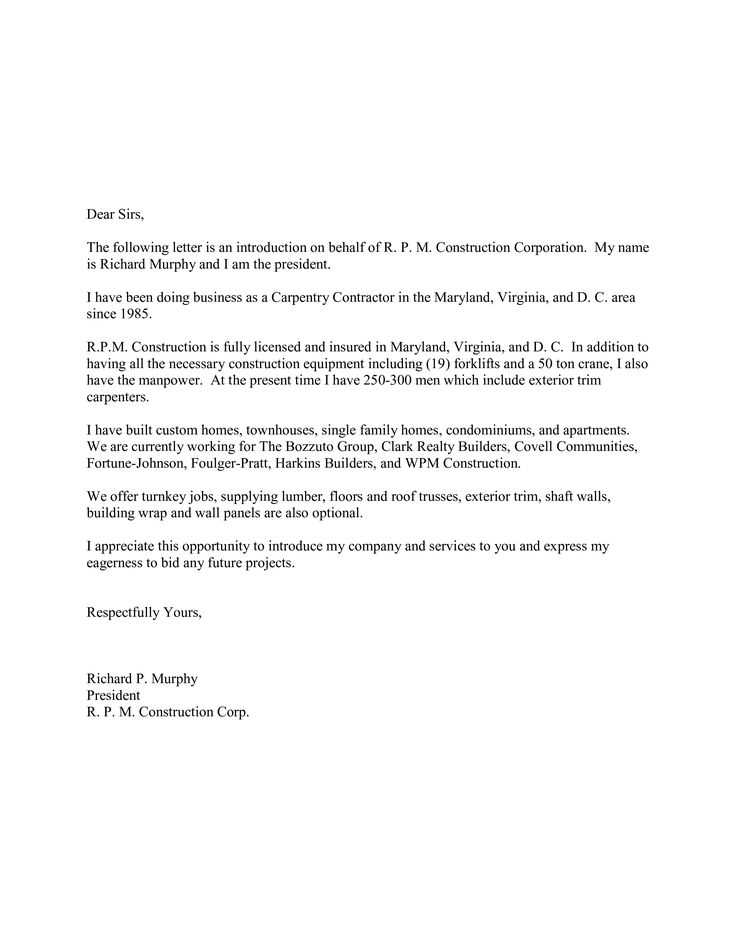
Your opening line should instantly grab attention. Avoid vague greetings like “I hope this email finds you well.” Instead, begin with a direct, clear statement of value. For instance, mention how your product or service can solve a specific problem they are facing. By addressing their needs right away, you show you’re focused on their success, not just pitching your own business.
Personalization is key. Tailor your opening to the recipient. Referencing something specific about their company or industry helps establish relevance. You might say, “I noticed your company’s recent expansion into new markets and believe our solution can streamline your process during this exciting phase.” This approach shows you’re engaged and have done your homework.
Keep the tone warm and professional, yet confident. A friendly but assertive approach increases the likelihood of a positive response. Make sure your opening line is concise and clear, inviting the reader to continue without feeling overwhelmed by unnecessary details.
Personalizing Your Message: Why Customization Matters
Tailor your communication to the recipient’s specific needs and interests. Doing so shows that you value their business and are genuinely invested in their success. A personalized introduction letter should not be generic. Address the person by name and mention specific details about their company to demonstrate you’ve done your research. This creates an immediate connection and makes the reader feel like they are the focus of your message.
Rather than using a one-size-fits-all template, incorporate details that reflect the recipient’s goals, challenges, or recent achievements. By aligning your message with their business objectives, you show you understand their unique situation and are offering a solution, not just a product. For example, reference a recent project or news related to their industry to indicate that your proposal is relevant and timely.
Customization enhances the chance of receiving a positive response. It sets you apart from the countless other messages they may receive that lack this level of attention. Personal touches, such as acknowledging their role within the company or their company’s mission, can build rapport and trust.
Focus on building a relationship. A personalized approach goes beyond transactional communication. Demonstrate your willingness to collaborate and help solve specific problems they may be facing. People appreciate when a business takes the time to understand them, and this approach fosters a deeper, more productive professional connection.
Structuring Your Offer: Highlighting Benefits for the Recipient
Focus on the specific advantages your offer brings to the recipient’s business. Clearly outline how your product or service addresses their needs, solves a problem, or improves their current operations. Tailor your message to their priorities, showing an understanding of their goals and challenges.
Clarify the Immediate Value
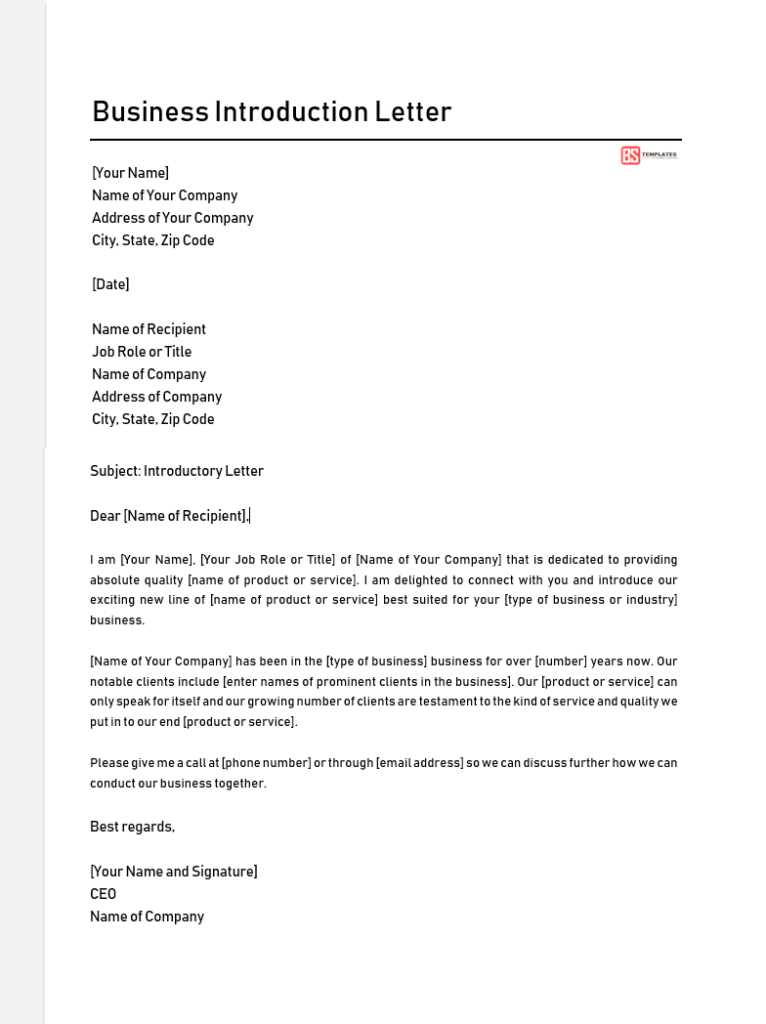
Start by pointing out the immediate gains they will experience by partnering with you. Highlight cost savings, time efficiency, or improved performance. Use measurable data to demonstrate how your offer will impact their bottom line or productivity.
Emphasize Long-Term Advantages
Next, discuss the long-term benefits. Focus on how your offer will continue to support their growth, scalability, and sustainability. Explain how you can help them stay ahead of competitors or enhance their customer satisfaction over time.
Use concrete examples, case studies, or statistics to back up your claims. This gives your offer more credibility and helps the recipient visualize the outcomes. Make sure every point you make directly aligns with their business objectives, showing a clear path to success with your solution.
Creating a Clear Call to Action for Follow-Up
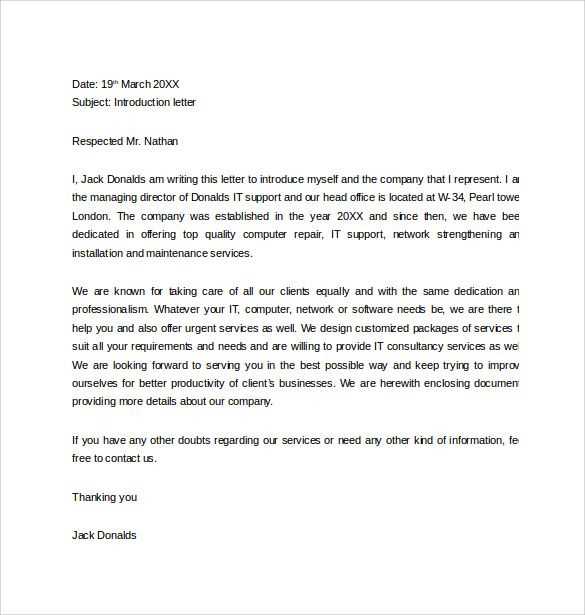
Make your call to action (CTA) clear and straightforward. Ensure it leaves no room for confusion about what action you want the recipient to take next. A strong CTA guides the reader to the next step with minimal effort.
Be Specific with Your Request
Avoid vague language. Instead of asking for “more information,” specify what you expect, such as “schedule a meeting” or “request a demo.” This gives the recipient a clear and actionable task.
Provide Easy Next Steps
Make following up simple. Include all necessary details for the recipient to take action, such as links to schedule a call or a phone number for direct contact. The easier it is for them to act, the more likely they are to follow through.
- Include direct scheduling links.
- Offer multiple ways to connect (email, phone, calendar).
- Set clear deadlines for responses if applicable.
Using a clear CTA shows professionalism and respect for the recipient’s time, making it easier for them to engage with your offer. Keep it simple and actionable, with no unnecessary steps.
Common Mistakes to Avoid When Writing a B2B Introductory Letter
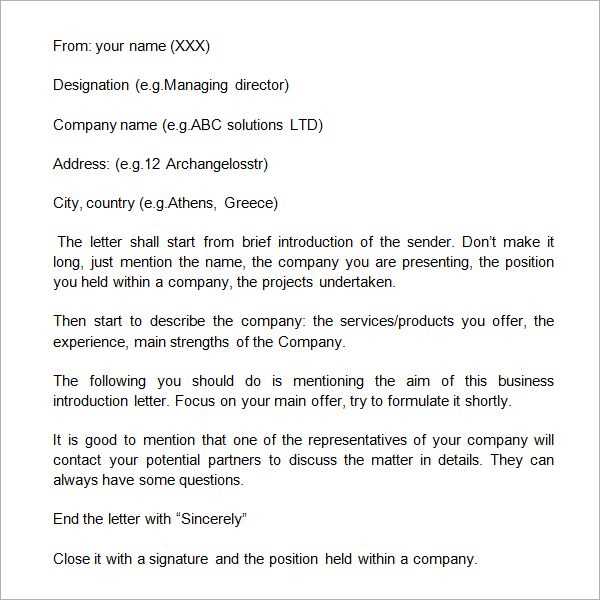
Focus on clarity and precision. Avoid using overly complex language or jargon that might confuse your reader. Keep sentences concise and to the point. If your message isn’t clear within the first few lines, your reader might lose interest.
1. Neglecting Personalization
A generic letter can make your potential client feel like just another number. Research your recipient’s business and mention specifics that show you understand their needs. This makes your letter stand out and shows genuine interest.
2. Failing to Establish a Clear Purpose
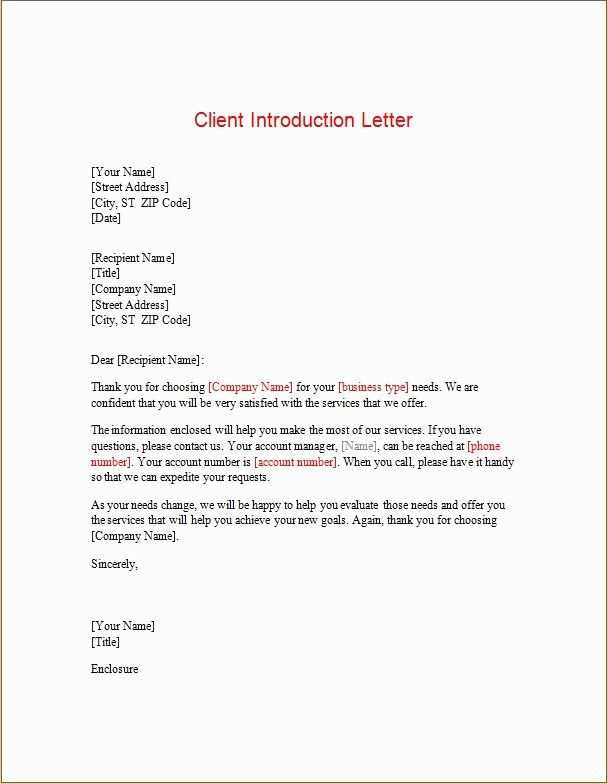
State your objective upfront. Whether you want to schedule a meeting or introduce a product, make it clear from the start. This helps the reader quickly understand the value of your letter and act accordingly.
3. Ignoring the Tone of Your Letter
Ensure the tone matches the nature of the business relationship you’re building. A too casual or overly formal tone can create a disconnect. Strive for professionalism while maintaining a friendly, approachable style.
4. Overloading the Letter with Information
Including too many details can overwhelm the reader. Stick to the essentials that directly relate to your purpose. Save the rest for follow-up communication if necessary.